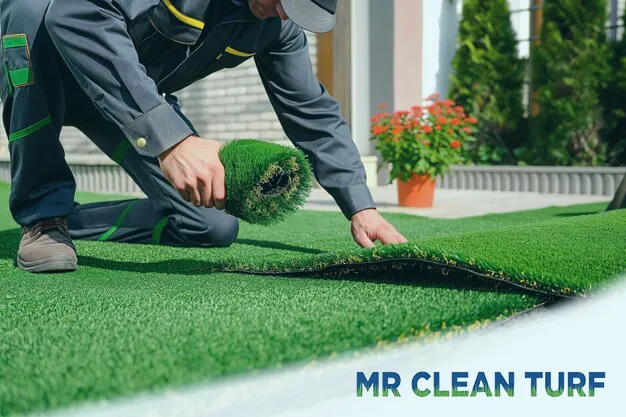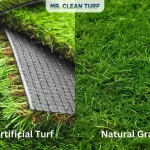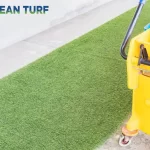Preparing Your Yard for Artificial Turf Installation: Tips and Tricks
Artificial turf is an amazing upgrade to every yard. It provides an attractive, low-maintenance option to grass that is natural. The key to achieving the perfect and lasting finish begins with an appropriate pre-planning. If you’re thinking of installing artificial turf, this guide will take you through the essential actions and tips to ensure that your turf is in good shape for an easy and efficient installation.
Assess Your Yard
Before you begin the process of preparation, take a look at the condition of your garden. Find out what factors could influence the process of installation, for example, uneven terrain as well as existing vegetation and inadequate drainage. Being aware of these issues in advance allows you to take action and lay the groundwork to ensure a perfect installation.
- Assess Drainage: Check that your yard is equipped with adequate drainage to stop it from becoming a pool of water beneath your turf. Poor drainage may cause wet spots, or even damage to the turf as time passes.
- Locate Obstacles: Look for stones, roots, weeds, or any other obstacles that could interfere with installation or alter the look of turf.
- Measure Your Space: Measure the exact area that the turf will be put in to calculate the quantity of turf needed.
Remove Existing Vegetation
The removal of the natural grass, weeds, and any other plants is an essential step. The removal of these under the artificial turf could cause unevenness, or could even trigger plants growing in the turf.
- Make use of a sod cutter to get rid of grass and its roots with ease.
- To get rid of weeds with a lot of resistance, you can consider applying a weed killer a couple of weeks before installation. It will ensure that any roots will be eliminated.
Grade and Level the Surface
The surface must be even for artificial turf to appear and perform at its highest. Inconsistent ground could cause bumps, dips, or possible damage over time.
- Fill in low spots: Use soil or an earth base for filling the low spots. It should be compacted thoroughly to prevent the soil from settling in.
- Make the Slight Slope: If it is possible, level the ground so that water can move away from the home or structure. This improves the drainage process and helps prevent water accumulation.
Install a Weed Barrier
A weed barrier serves as an artificial turf layer that is placed under the artificial turf, to deter the growth of weeds. It will ensure that no unwelcome plant species check the beauty of your garden.
- Install a geotextile cloth all over the area.
- Make sure to secure the corners of your fabric using stakes to ensure it stays in place throughout the process of installation.
Add a Base Layer
The base layer gives stability and supports for the turf artificially, assuring that the turf remains in a level, secure position.
- Choose the Best Base Material: Decomposed or crushed granite is often used as an element of base. They permit adequate drainage and also prevent shifts throughout.
- Spread the Base evenly: The material should be spread evenly over the entire area, making sure that the depth is 3-4 inches.
- Compact the Base: Utilize a plate compactor to make the base material compact solidly. This will create a strong base for turf.
Address Edges and Boundaries
The well-defined boundaries and edges improve the appearance and look of the artificial turf you have installed. These also aid in keeping the turf in its correct position.
- Install bender boards and other edge conditions on the entire perimeter.
- The boundaries stop the turf from shifting and rising over time.
Address Edges and Boundaries
When the base is set, a light layer of sand is applied to the area. This aids in drainage and also creates a better, more even base for the turf.
- Make use of a leveling tool to disperse the sand evenly.
- Condense the sand layer to make sure it’s solid and sturdy.
Install Turf using Precision
Proper placement and securement of the artificial turf are essential to achieve an authentic look.
- Lay the turf carefully: Unroll the turf and then position it to the design. Be sure the grain is running in the identical direction.
- Cut the Edges: Utilize a knife to trim grass along the edges of the lawn to get an exact fit.
- Secure the Turf: Utilize staples or nails to secure the turf. Set them around the perimeter as well as throughout the entire area to stop any movement.
Finishing Touches
Once you have secured the turf, complete the installation by following these actions:
- Apply Infill: Distribute infill materials including crumb rubber, silica sand, or even chalk to support the turf, and keep it looking good.
- Brush the Turf: Use a stiff-bristled to brush the turf fibers, and then equally distribute the infill.
- Check the installation: Look for missing edges or regions that require adjustment.
Conclusion
The preparation of your lawn to install artificial turf is an essential step to creating a durable and beautiful outcome. With these guidelines and tricks, you’ll be able to make a sturdy base for your artificial grass which enhances the appearance as well as the functionality of your outdoor area.
If you are looking for the best artificial turf installation in Phoenix, a thorough process coupled with expert knowledge guarantees longevity of satisfaction. Turn your yard into an attractive, easy-care oasis by following the correct actions and guidance.
Get in touch with the experts by calling Mr Clean Turf to ensure that your lawn transformation is smooth and effortless!



